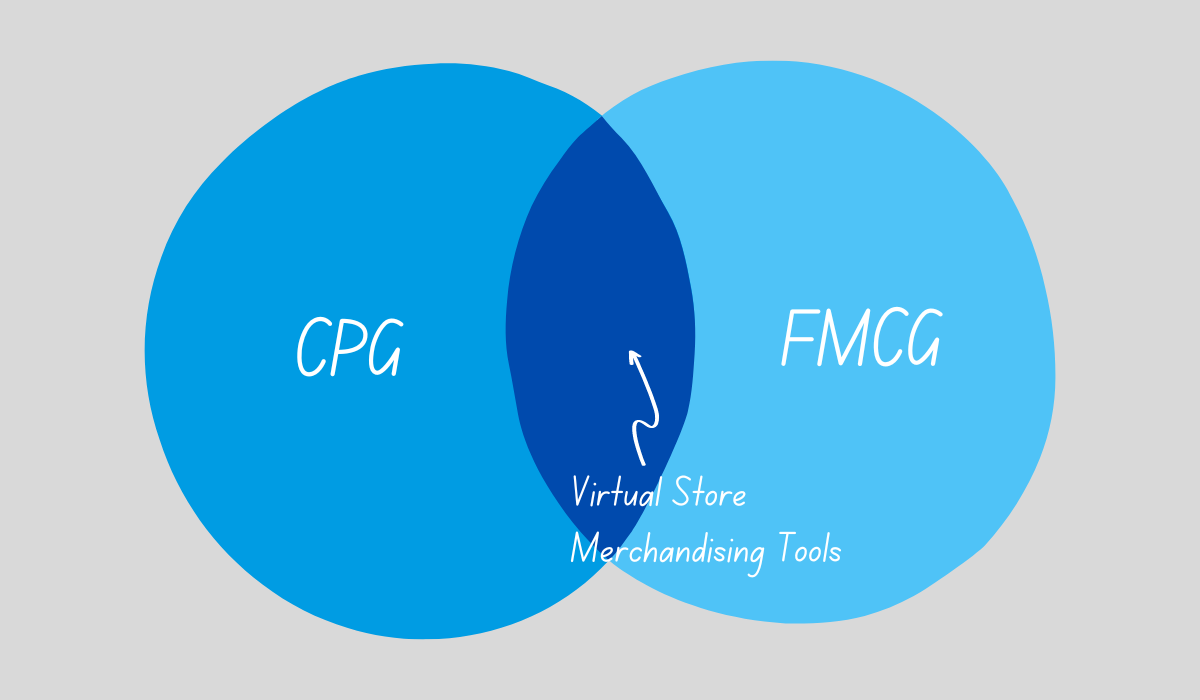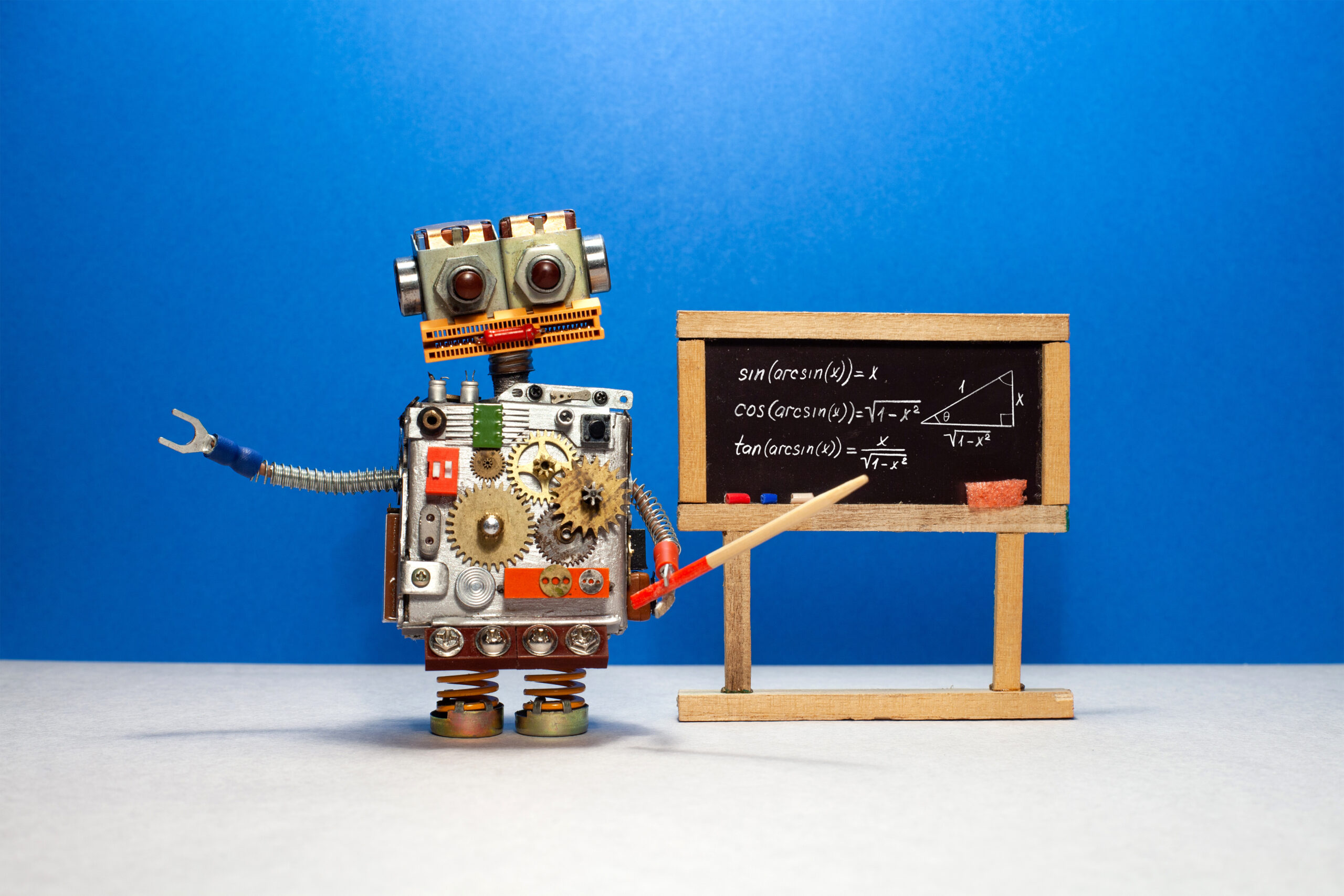With over 4.7 million new businesses starting yearly, understanding and measuring brand loyalty has never been more critical. Traditional methods of gauging customer loyalty are augmented by cutting-edge technologies, offering deeper insights and more accurate predictions. One such innovative approach is the use of 3D simulation technology. By creating immersive, interactive environments, 3D simulation tech allows retailers to analyze customer behavior and preferences in previously impossible ways. In this blog post, we will explore the importance of brand loyalty and how advancing retail research with 3D simulation technology is revolutionizing its measurement, providing retailers with invaluable data to enhance their strategies and foster stronger customer connections.
What is Brand Loyalty, Exactly?
Brand loyalty is a customer’s consistent preference and commitment to repurchase a specific brand’s products or services over time, despite competitors’ offerings, and according to a recent article by Forbes, it’s more important than ever. It signifies a deep, enduring relationship between the brand and the customer, built on trust, satisfaction, and positive experiences. For retailers, brand loyalty translates to repeat business, higher lifetime value, and a competitive edge in the market. Loyal customers are frequent buyers and advocates who recommend the brand to others, contributing to word-of-mouth marketing and organic growth.
For example, consider a retail fashion brand that consistently delivers high-quality products, exceptional customer service, and a personalized shopping experience. A customer who regularly purchases from this brand engages with its customer loyalty programs and follows its social media updates, demonstrating brand loyalty. This loyalty is reflected in the customer’s willingness to pay a premium for the brand’s products and their likelihood to choose the brand over others, even when presented with cheaper alternatives. Such repeat customers are crucial for the retailer as they provide a steady revenue stream and help to stabilize the business during economic fluctuations.
From a retailer’s perspective, fostering brand loyalty involves consistently understanding and meeting customer needs. This can be achieved through offering exclusive deals, maintaining high product quality, and providing excellent customer support. Additionally, leveraging data analytics to personalize marketing efforts and enhance the customer experience can further strengthen loyalty. For instance, by analyzing purchase history and preferences, retailers can tailor their communications and promotions to individual customers, making them feel valued and understood. This personalized approach reinforces the customer’s connection to the brand, driving long-term loyalty and sustained business success.
Why does it matter?
Brand loyalty is incredibly important, particularly in the realm of in-store shopping. According to Forbes Advisor, over 20% of retail purchases will happen online in 2024, making in-store competition even more fierce, which is why customer loyalty is essential to business.
This loyalty translates into a more predictable number of customers and revenue streams, helping retailers manage inventory and plan more effectively. Plus, in-store brand loyalty often leads to higher average transaction values, as loyal customers tend to spend more per visit, trusting the quality and value of the brand.
Why Retailers and Brands Should Measure Customer Loyalty
Brand loyalty might be important, but is it worth measuring? If a business seeks long-term success, the answer is a resounding yes. The adage “what gets measured gets improved” particularly applies to brand loyalty. By quantifying loyalty, businesses can identify areas of strength and opportunities for improvement, allowing for targeted strategies that enhance customer retention and satisfaction. Understanding and tracking brand loyalty metrics provides actionable insights that can directly influence marketing efforts, product development, and customer service initiatives. When businesses can measure brand loyalty, they gain the ability to impact it positively, driving sustainable growth and competitive advantage in the marketplace.
Let’s take a look at some of the top reasons to measure brand loyalty:
Customer Retention
Customer retention is a fundamental reason to measure brand loyalty. It enables retailers and brands to identify and focus on those likely to make repeat purchases. Businesses can tailor their strategies to nurture these relationships by understanding brand loyalty. Retaining existing customers is often more cost-effective than acquiring new ones, as it typically requires less investment in marketing and sales. Loyal customers contribute to consistent revenue streams, providing financial stability and predictability for the business. They also tend to spend more over time and can become brand advocates, further reducing marketing costs through word-of-mouth referrals and positive reviews. Measuring brand loyalty allows businesses to implement targeted retention strategies that maximize these benefits, ensuring long-term success and growth.
Revenue Prediction
Revenue prediction is another critical factor in measuring brand loyalty, as it offers valuable insights into future purchasing behaviors and patterns. By understanding their customer base, businesses can anticipate consistent revenue from repeat buyers, making financial forecasting more accurate and reliable. This predictable revenue stream from loyal customers enables better financial planning and more efficient resource allocation. With a clear understanding of future income, businesses can make informed decisions about inventory management, marketing budgets, and expansion plans. Measuring brand loyalty thus not only ensures long-term business stability and supports strategic growth by providing a solid foundation for financial management and planning.
Increased Sales
Measuring brand loyalty also plays a pivotal role in driving increased sales. Repeat customers tend to make more frequent purchases and spend more per transaction than new customers. By identifying and nurturing these loyal customers, businesses can capitalize on their propensity to buy more and buy often. Loyal customers are also more likely to explore and purchase new products or services the brand offers, contributing to a steady increase in sales volume. Additionally, these customers often serve as brand advocates, recommending the brand to friends and family, which can lead to new customer acquisition through positive word-of-mouth. By focusing on and measuring brand loyalty, businesses can implement strategies that retain existing customers and boost overall sales, creating a compounding effect that supports sustained business growth and profitability.
Customer Engagement
Customer engagement is significantly enhanced by measuring brand loyalty. Loyal customers are more likely to interact with the brand across multiple channels, such as social media, email marketing, and loyalty programs. This consistent engagement fosters stronger relationships between the brand and its customers, as they feel more connected and valued. Higher levels of customer engagement also translate to increased brand advocacy, where satisfied customers actively promote the brand to their networks. This form of word-of-mouth marketing is incredibly effective and often more credible than traditional advertising. Businesses can boost customer engagement by focusing on and measuring brand loyalty, resulting in a more vibrant and supportive customer community that drives growth and amplifies marketing efforts.
Competitive Advantage
Strong brand loyalty differentiates a brand from its competitors, making it more resilient to market fluctuations and competitive pressures. A loyal customer base provides a significant edge, as these customers are less likely to switch to competitors, even when faced with enticing offers or lower prices elsewhere. This loyalty helps the brand maintain its market position and ensures a steady revenue stream. Additionally, loyal customers often become brand ambassadors, promoting the brand through positive word-of-mouth and enhancing its reputation. This trust and positive perception attract new customers, further solidifying the brand’s competitive stance.
Measuring Brand Loyalty: Where to Start
Measuring brand loyalty isn’t straightforward, as it encompasses a complex set of individual factors that collectively define a customer’s allegiance to a brand. While necessary, understanding brand loyalty requires a deep dive into these influencing elements. Each factor, from product quality to customer engagement, is critical to loyalty. Therefore, to accurately measure brand loyalty, it’s essential first to identify and comprehend these contributing factors. By doing so, businesses can develop more effective strategies to assess and enhance loyalty, ensuring a comprehensive approach to cultivating a devoted customer base.
What factors increase brand loyalty?
Understanding what drives brand loyalty is essential for any business aiming to build a loyal customer base and sustain long-term success. By focusing on how customers perceive and interact with a brand, businesses can create a strong foundation for customer retention and satisfaction.
But you can’t have brand loyalty without loyal customers and you can’t have loyal customers without understanding what makes them tick. At InContext we’re here to help you do just that.
Let’s delve into the primary elements that significantly boost brand loyalty, from product quality to personalized experiences.
A Brand’s Values
In today’s market, more and more customers are drawn to brands that stand for something and align with their values, significantly increasing customer loyalty. Brands that take clear stances on social, environmental, or ethical issues tend to resonate more deeply with consumers who share those values, fostering a stronger emotional connection. For example, the outdoor clothing brand Patagonia is well-known for its commitment to environmental sustainability and social responsibility. By actively promoting environmental activism, using sustainable materials, and encouraging customers to buy used Patagonia products, the brand has successfully built a fiercely loyal customer base supporting and advocating for its mission. This alignment of values attracts like-minded consumers and turns them into repeat customers and passionate brand advocates, enhancing long-term loyalty and market differentiation.
Quality of Products or Services
Delivering high-quality products that meet or exceed customer expectations is fundamental to building brand loyalty. When customers know they can rely on a brand for superior products, they develop a sense of trust and satisfaction. This reliability becomes the foundation of their loyalty, encouraging repeat purchases and long-term commitment to the brand. A prime example of this is Starbucks, where customers all across the country know that their order will come out the same, no matter which location they visit. High-quality and consistent products fulfill customer needs and enhance the brand’s reputation, making it more attractive to potential new customers who value quality and dependability. This consistency across all locations reinforces customer trust and loyalty, ensuring customers return repeatedly.
Exceptional Customer Service
Providing prompt, helpful, and friendly service significantly enhances the overall customer experience, making customers feel valued and appreciated. When issues arise, or questions need answering, exceptional customer service ensures that these concerns are addressed efficiently and effectively. This positive interaction increases the likelihood of customers remaining loyal to the brand, as they associate it with high care and responsiveness. Excellent customer service can turn a one-time buyer into a lifelong customer, as satisfied customers are likelier to return and recommend the brand to others.
Personalization
Personalization is a powerful tool for increasing brand loyalty. By tailoring marketing messages, product recommendations, and shopping experiences to individual customer preferences, brands can create a more engaging and relevant experience for customers, making them feel understood and valued. By utilizing data analytics and customer feedback, brands can gain insights into customer behaviors and preferences, allowing them to anticipate needs and offer personalized solutions. Personalization improves the shopping experience and strengthens the emotional connection between the customer and the brand, fostering deeper loyalty.
An Exceptional Customer Experience
An exceptional customer experience is the cornerstone of brand loyalty, encompassing every element influencing a customer’s brand perception. Whether you’re a brand or a retailer, providing a superior customer experience is the most critical factor in cultivating loyalty. Every interaction shapes the customer’s journey from the initial encounter with the brand to the packaging, and even the in-store experience, such as the ease of finding products on the shelf. This holistic approach to customer satisfaction ensures that each touchpoint is positive and memorable. From the initial discovery of a product to post-purchase support, delivering consistently positive interactions builds a strong emotional connection with the brand. When customers experience satisfaction at every stage are more likely to become loyal advocates, returning for repeat purchases and recommending the brand within their networks. This comprehensive focus on the customer experience fosters loyalty and drives long-term success and growth.
Using 3D Simulations to Measure Brand Loyalty
At InContext, we understand how heavily brand loyalty relies on the customer experience. We also know that truly understanding brand loyalty requires precise measurement, and our suite of tools provides the data needed to perfect the shopper experience. Our cutting-edge platform, ShopperMX, leverages advanced 3D simulation technology to help brands and retailers gain deep insights into customer behavior. From designing detailed 3D store models to experimenting with merchandise layouts and visualizing new product placements, ShopperMX allows for extensive testing and iteration in a risk-free virtual space. This comprehensive approach ensures that retail teams can implement the most effective merchandising strategies, enhancing customer satisfaction and loyalty.
Measuring brand loyalty involves more than just analyzing sales data; it requires a holistic view of the customer journey. Key metrics such as the total number of customers, upsell and cross-selling opportunities, and average customer lifetime value provide a deeper understanding of loyalty. With ShopperMX, retailers and brands can gather valuable insights on how customers interact with different store layouts and product placements through digital twins and 3D store environments. This virtual approach enables in-depth shopper research, identifying the most effective strategies for driving customer engagement and conversions. Additionally, our AR tools can be used to train employees, ensuring they provide exceptional service and contribute to a positive shopping experience.
Our platform also offers advanced personalization features, allowing retailers to tailor marketing messages, product recommendations, and shopping experiences to individual customer preferences. This level of personalization is crucial for building lasting customer relationships and enhancing loyalty. By utilizing data analytics and customer feedback, retail teams can anticipate customer needs and deliver a customized shopping experience that delights and satisfies.
With ShopperMX, InContext empowers retailers and brand to optimize every aspect of the customer experience, from initial engagement to post-purchase support, ensuring that every touchpoint is positive and memorable. This comprehensive approach drives higher sales and customer satisfaction and builds a loyal customer base that advocates for the brand, ensuring long-term success. Additionally, offering targeted incentives based on market research further encourages repeat purchases and deepens customer loyalty.
The Bottom Line: Increase Yours With InContext
In the competitive world of retail, brand loyalty is the secret sauce to boosting your bottom line. However, achieving brand loyalty requires deeply understanding what drives your customers’ behaviors and preferences. Loyal customers are the foundation of sustained business success, but you must first understand what makes them tick to cultivate this loyalty. At InContext, we provide the tools and insights to measure and enhance brand loyalty through our advanced 3D simulation technology. By leveraging our expertise, you can create an exceptional customer experience that attracts and retains loyal customers. Let InContext help you unlock the full potential of your retail strategy, ensuring a stronger, more profitable future.
Other Terms That Might Be Helpful in this Context
Customer Churn Rate
Customer Churn Rate is the percentage of customers who stop doing business with a company during a period. It is the inverse of the customer retention rate and is used to measure customer loss and evaluate the effectiveness of customer retention strategies.
Customer Lifetime Value (CLV)
Customer Lifetime Value (CLV) is the total revenue a business can expect from a single customer account throughout their relationship. It helps businesses understand their customers’ long-term value and make informed decisions about customer acquisition and retention strategies.
Customer Loyalty Index
The Customer Loyalty Index is a composite metric combining multiple customer loyalty indicators, such as repeat purchase rate, customer retention rate, and Net Promoter Score, to comprehensively measure overall customer loyalty.
Customer Retention Rate (CRR)
Customer Retention Rate (CRR) is the percentage of existing customers who continue to do business with a company over a specific period. It is a key indicator of customer loyalty and satisfaction, reflecting the effectiveness of a company’s customer retention efforts.
Customer Satisfaction Score (CSAT)
Customer Satisfaction Score (CSAT) is a metric that measures customers’ satisfaction with a product, service, or experience. It is typically gathered through surveys and expressed as a percentage, with higher scores indicating greater customer satisfaction.
Net Promoter Score (NPS)
Net Promoter Score (NPS) is a metric that assesses customer loyalty by asking customers how likely they are to recommend a company’s product or service to others. Responses are collected on a scale from 0 to 10, and the score is calculated by subtracting the percentage of detractors (0-6) from the rate of promoters (9-10). NPS provides insights into customer satisfaction and the likelihood of generating positive word-of-mouth.
RPR (Repurchase Rate)
Repurchase Rate (RPR) measures the frequency customers make repeat purchases over a period. It is an important indicator of customer loyalty and the effectiveness of marketing and retention efforts.





